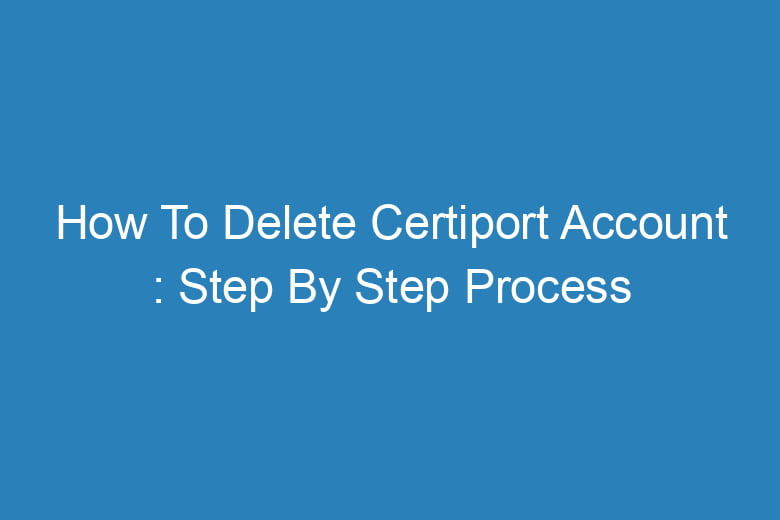Online accounts have become an integral part of our lives. Whether it’s for social media, email services, or educational platforms like Certiport, we accumulate numerous accounts over time.
However, there might come a time when you decide to streamline your online presence or simply no longer need a particular account. In this comprehensive guide, we’ll walk you through the step-by-step process of deleting your Certiport account.
Why Delete Your Certiport Account?
Before we dive into the deletion process, it’s crucial to understand why you might want to delete your Certiport account. Here are some common reasons:
No Longer Need the Services
Perhaps you’ve achieved your certification goals or found alternative resources that better suit your needs. In such cases, retaining your Certiport account might be unnecessary.
Concerns About Data Privacy
Privacy concerns have become increasingly important in today’s digital landscape. If you’re worried about the security of your personal information on Certiport, deleting your account can offer peace of mind.
Simplifying Your Online Presence
Managing multiple online accounts can be overwhelming. Deleting unused accounts is an effective way to declutter your digital life.
Now that you understand why you might want to delete your Certiport account, let’s move on to the step-by-step process.
Step 1: Log In to Your Certiport Account
To get started, you’ll need to log in to your Certiport account using your credentials. If you’ve forgotten your password, use the “Forgot Password” option to reset it.
Step 2: Access Your Account Settings
Once logged in, navigate to your account settings. This is usually found in the upper-right corner of the Certiport dashboard, represented by your profile picture or username.
Step 3: Locate the Account Deletion Option
In your account settings, search for the option related to account deletion. Certiport may have different terminology for this, such as “Close Account” or “Delete Profile.”
Step 4: Confirm Your Decision
Before proceeding, Certiport will likely ask you to confirm your intention to delete your account. This is a security measure to prevent accidental deletions.
Step 5: Provide a Reason for Deletion
Many online platforms, including Certiport, request that users provide a reason for deleting their accounts. This feedback can be valuable for improving their services.
Step 6: Review Your Data
Before finalizing the deletion, take a moment to review any data or information associated with your Certiport account. Ensure that you’ve saved any essential documents or certificates elsewhere.
Step 7: Confirm Deletion
Once you’ve reviewed your data and are certain about your decision, confirm the deletion of your Certiport account. This action is typically irreversible, so proceed with caution.
Frequently Asked Questions
Can I Recover My Certiport Account After Deletion?
No, the deletion of your Certiport account is usually irreversible. Make sure you’re certain about your decision before proceeding.
What Happens to My Certification Records?
Before deleting your account, ensure you’ve saved copies of your certification records, as Certiport may no longer have access to them.
How Long Does the Deletion Process Take?
The deletion process varies by platform, but it typically occurs within a few days to a week. Check Certiport’s policies for specific timeframes.
Is My Data Completely Erased?
Certiport will likely retain some data for legal or administrative purposes. However, your account and personal information should be deleted.
Can I Create a New Certiport Account Later?
Yes, you can create a new Certiport account if you ever decide to return to their services.
Conclusion
Deleting your Certiport account is a straightforward process that can help you maintain control over your online presence. Whether you’re concerned about data privacy or simply no longer need the services, following the steps outlined in this guide will ensure a smooth account deletion experience.
Remember to back up any important information before proceeding, and always make informed decisions when managing your online accounts.

I’m Kevin Harkin, a technology expert and writer. With more than 20 years of tech industry experience, I founded several successful companies. With my expertise in the field, I am passionate about helping others make the most of technology to improve their lives.

